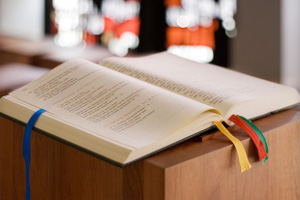 The first question this text raises is: “who is the servant”? It could be Israel (v.3 and 41:8-9), but it is also clearly the prophet (v.5).
The first question this text raises is: “who is the servant”? It could be Israel (v.3 and 41:8-9), but it is also clearly the prophet (v.5).
This ambiguity between the corporate and the individual; between the community and the person seems probably more strange to us than it might have done to the first hearers or readers of this text. The prophet is not a replacement of Israel, he (l do not think a woman wrote this text) is part of Israel, but a faithful embodiment of the community.
In a way this text is a dialogue between God and the servant. It is a dialogue in which the prophet receives a task: to bring Jacob back and to be a light to the nations; to restore Israel and to be salvation to the ends of the earth. (The Hebrew verb that is translated as “reach” in the NRSV is haya which is “to be”.) It is a task we might recognise as Jesus’ mission. It is also a calling we might recognise as our own or that of our community. There is again the interesting ambiguity between the community and the person especially captured in how Paul uses “the body of Christ” (1 Cor. 12). Are we ready to both bring back the people of God and to be light and salvation for everybody?
15 January 2017
Isaiah 49:1-7
This weekly blog on one of the lectionary readings is by Anna-Claar Thomasson-Rosingh, Coordinator for the Centre for Encountering the Bible and Director of Studies for the Centre for Formation in Ministry.

Leave a Reply